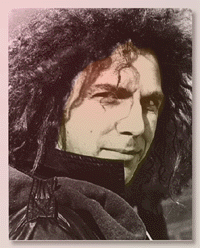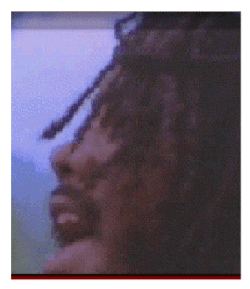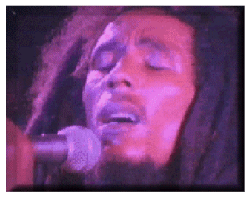 BACKSTAGE
BACKSTAGE
Contact
Info:
HeartlandReggae
![]()

"Heartland
Reggae", the pioneering Jamaican reggae music documentary, is once
more available to the public. After going through intrigues and being
held-back for many years by an unfortunate film-industry contract "Heartland
Reggae" is again in the able hands of it's original director/cinematographer
Jimmy Lewis.
"Heartland Reggae" was a first. The first reggae music documentary, but more importantly, the first behind the scenes entre into that unique Jamaican society that gave birth to reggae.
The 1973 release of Perry Henzell's "The Harder They Come", starring Jimmy Cliff, opened up a flood-gate of interest in all things Jamaican. Although it was a fictionalized recounting and made on a small budget, "The Harder They Come" quickly established itself as a cult classic, playing an eight year run in one Boston area theater alone.
"The Harder They Come" opened the door for an outside view of Jamaican reality. "Heartland Reggae" took us through the door and into the real nitty-gritty of the Jamaican experience. In the tradition of the finest documentary film-makers "Heartland Reggae" was there to focus the camera onto history in the making.
The filming started in November of 1977 at an outdoor festival in Savanna-la-mar featuring Jacob Miller, Dennis Brown (with newly sprouting dreadlocks), The I-Threes, U Roy, 12 year old Junior Tucker, Althea & Donna, Lloyd Parks and the "We The People Band." Reggae historian Roger Steffens gives a commentary throughout the film.

The
Savanna-la-mar concert will always be remembered by the antics of Jacob
(Killer) Miller shaking his big-belly, donning a policeman's cap, lighting
up a fatty and deriding the establishment for their repression of marijuana
and dreadlocks. Jacob Miller's band "Inner Circle" was in fine
form, but what the movie doesn't tell us is that Jacob was vexed because
one of the band had been busted by the cops for possessing a small amount
of herb on his way to the concert.
These were heady times. The dreadlock Rasta movement was erupting like an untapped volcano onto the consciousness of the Jamaican Island. For over 400 years Jamaica had been under the thumb of first the Spanish then the English colonial masters. This is a land drenched in blood. The Spanish exterminated the indigenous Arawak Indians because they wouldn't be compliant slaves. African slaves then toiled under the whip in the hot Jamaican sun with no respite century after century. The penalty for a wrong look was the lash. The penalty for an expressed thought -the hanging-tree. As late as the 1950's dreadlocks were relegated to the woodlands. Any dreadlock (Blackheart-Man) found on the street would likely get a bullet in the head.
Jamaica was just starting to come out from under the suffocation of modern era neo-cocacolonialism. The wave of hippy tourists in the late 60's and early 70's took a little of the heat off the Jamaican dreadlocks. The emerging Rasta consciousness was peaking by the time "Heartland Reggae" started filming. Dreadlocks were no longer confined to the bush-camp but were being seen in the wealthy parts of town. The Jamaican establishment had no choice but to come to terms with its dreadlocked sons and daughters.
But this was a bitter pill for certain powers-that-be to swallow. Nothing could portray this more poignantly than "Heartland Reggae" documenting on film, Peter Tosh's Trelawny Beach concert. Tosh, perhaps the most militant exponent of the Rasta movement, gives a biting performance. His rendition of the song "400 Years" pulls no punches -400 years from colonial genocide to neo-colonial oligarchy. Yet the system continues to keep the people in poverty, hunger and deprivation. Tosh paid the price for his militancy. Soon after the concert he was arrested by the police for possessing one marijuana spliff and nearly beaten to death.

Although
Bob Marley's music was almost entirely censored off the radio waves in
Jamaica he was reaching super-star status around the world. In an episode
that has never been fully explained assassins broke into the Marley estate
during a band rehearsal. Despite the gunmen firing off a fuselage of shots
they could only manage to wound Marley, his wife and manager.
Marley fled the island while tensions built toward the coming election of 1978. The peaceful elections of the early 60's post-colonial period had now degenerated into a bloody affair with hundreds loosing their lives. Michael Manley's PNP and Edward Seaga's JLP adopted the curious policy of hiring gangsters by the bus-load to further their interests. This would be akin to the Democratic Party in the USA hiring a gang such as the Crips and the Republicans hiring the Bloods.
Then in one of those strange twists of history the two opposing gang leaders where locked up in the same jail cell one night and came to their senses with a semblance of decency. They formed the "Peace Committee" to try to bring sanity to the mayhem and announced the "One Love Peace Concert" to be held April 22 1978.
Bob Marely's return to the Island for the concert electrified the nation and the camera of "Heartland Reggae" was there to document what followed. Marley gave a blistering performance and sang in public, for the first time, the song "War," which is actually a speech by Emperor Sellasie of Ethiopia set to music. Also to be seen on stage are two of Bob Marley's sons dancing to the music; Ziggy about four years of age and David barely out of diapers.
In the middle of his performance Marley announced, "Could we have on stage the presence of Michael Manley and Edward Seaga." The two very nervous political leaders, who had been refusing to speak to each other, joined Bob Marley on stage and, still skanking to the rhythm, Marley grabbed both of their hands and joined them together in an inverted V over his head. The crowd was shocked into stone silence. It was not until May, 1981, at Bob Marley's funeral, that these two politicians again spoke to each other.

Did
the "One Love Peace Concert" ultimately help or change anything?
That is a question future historians will have to answer but there is
no denying the absolute uniqueness of this event documented by "Heartland
Reggae."
"Heartland Reggae" was filmed in a time that stood at the fulcrum of history. It's like a snapshot of reality that portrays things as they were and will never be again. Bob Marley, Jacob Miller, Peter Tosh, Claudie Mossup and Bucky Marshall all soon met their death and commercialized reggae music faced a long draught away from its spiritual roots and social consciousness. Yet it is obvious the impact that this era had on Jamaica and the pervasive role of reggae music on the present day international sound-scape. We are fortunate that "Hearland Reggae" was there to document these events and we are again fortunate that "Heartland Reggae" is once more in circulation.
To purchase a copy of Heartland Reggae Director's Cut on DVD contact HRHQ at ungliderjames@gmail.ca